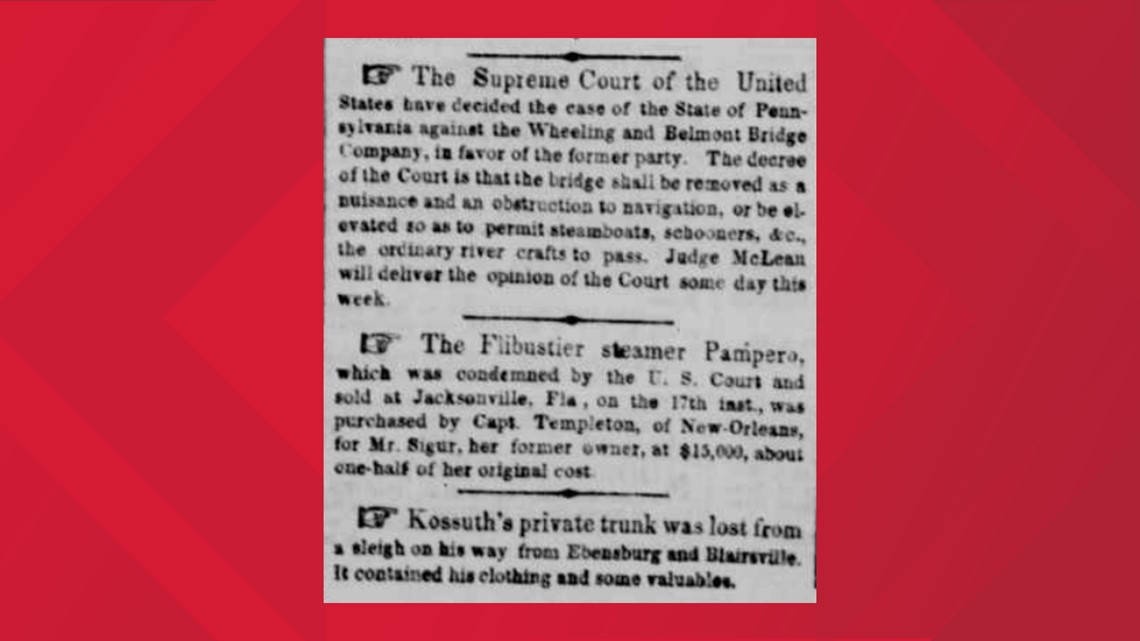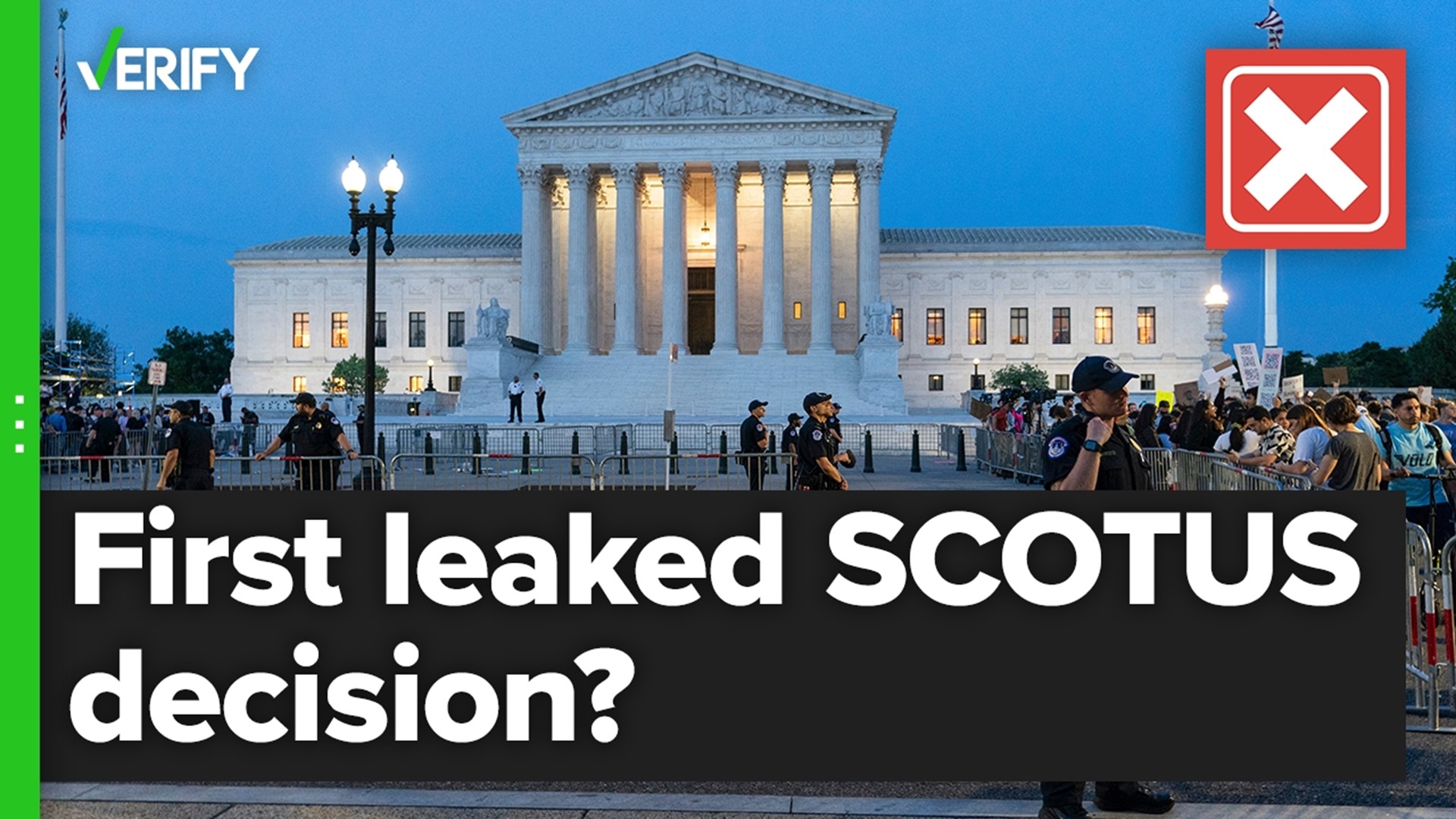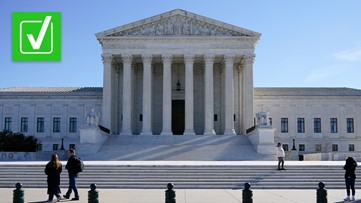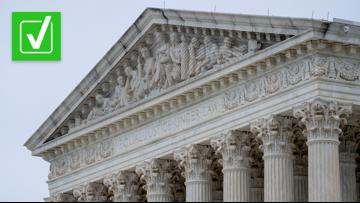Update June 24, 2022: Roe v. Wade was overturned by the Supreme Court on June 24. This story has been updated to reflect the final Supreme Court decision.
On June 24, the Supreme Court ruled in favor of Mississippi's anti-abortion law in Dobbs v. Jackson Women's Health Organization. The decision means the 1973 Roe v. Wade decision that made abortion legal nationwide was overturned.
In early May, a leaked copy of a draft decision authored by Supreme Court Justice Justice Samuel Alito suggested the court would vote to overturn the decades-old abortion law.
When the leak was published, many commentators and experts said across social media that the leak was “unprecedented.”
Several viewers also emailed VERIFY to ask if this was the first ever leak from the Supreme Court.
THE QUESTION
Was this the first time a Supreme Court decision had been leaked to the public?
THE SOURCES
- Library of Congress
- Jonathan Peters, Ph.D., a University of Georgia communications law professor and expert in Supreme Court leak history
- Benjamin Barton, a law professor at the University of Tennessee Knoxville
- Historical records from TIME and The Washington Post
THE ANSWER
No, this was not the first time a Supreme Court decision had been leaked to the public, but it was the first time the full text of a draft opinion had been leaked.
WHAT WE FOUND
The leak of Supreme Court Justice Samuel Alito’s majority opinion draft, which was written in February, suggested the Supreme Court voted against maintaining the federal abortion rights protections established in Roe v. Wade.
In a May 3 press release, the Supreme Court confirmed the authenticity of the draft and said it did not reflect a final decision by the court or the final position of any of the court’s members on the case’s issues. The final decision was issued on June 24.
There has never been a recorded instance where a Supreme Court opinion was leaked to the public before the court had released it. However, there have been rare instances in which Supreme Court votes or decisions were leaked ahead of the court’s announcement.
TIME published the original decision of Roe v. Wade in its weekly magazine hours ahead of the Supreme Court’s official announcement on Jan. 22, 1973. “Last week TIME learned that the Supreme Court has decided to strike down nearly every anti-abortion law in the land,” TIME’s article said. “Such laws, a majority of the Justices believe, represent an unconstitutional invasion of privacy that interferes with a woman's right to control her own body.”
According to a more recent article from TIME, the magazine’s story was supposed to publish after the decision came down, but it instead came out hours before the ruling because the Supreme Court delayed its release of the decision.
Jonathan Peters, Ph.D., a University of Georgia communications law professor and expert in Supreme Court leak history, referred in a Twitter thread to an 1852 case as one of the earliest instances of a Supreme Court decision being leaked.
The New York Daily Tribune reported the Supreme Court ruled in favor of Pennsylvania in Pennsylvania v. Wheeling and Belmont Bridge Company several days before the Supreme Court actually released its decision, according to a Library of Congress clipping of the newspaper.


On June 15, 1986, ABC News Supreme Court correspondent Tim O’Brien reported the Supreme Court would strike down a Congressional budget law the next day. O’Brien reported that the decision would be 7-2, and that Chief Justice Warren Burger would write the opinion. The decision didn’t come on June 16, but when the Supreme Court released its decision the next month. The Washington Post wrote about the leak and noted in a July 8, 1986 article that O’Brien had nailed all the details except for the date.
What made the leak of Alito’s opinion on Dobbs v. Jackson Women’s Health Organization so unprecedented, experts say, was that it was a full draft of an opinion from early in the process when much could have been subject to change.
“Leaking the outcome, and even a proposed vote tally, is really different than leaking these early versions of the opinion where you're getting the inside voice of the Supreme Court,” said Benjamin Barton, a law professor at the University of Tennessee Knoxville.
“It's not atypical for justices to join opinions, leave opinions, for majorities to crack — you'll get concurrences [to] grow,” Barton continued. “And again, this document appears to have come from February, so we have no idea where things stand by now.”












